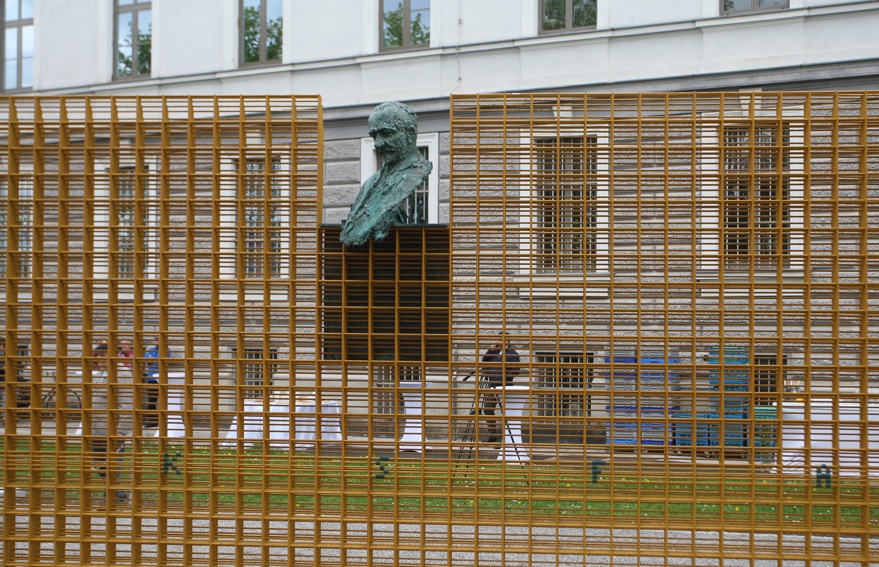The Maks Fabiani Monument
In the park at the Poljanska and Roška Street intersection stands the monument to the town planner and architect Maks Fabiani. The erection of the monument represents the final act of the celebrations of the 150th anniversary of his birth.
The Maks Fabiani monument is a memorial to the development of the city and its direction is a bow to the inner city circle. With its dimensions it addresses the pedestrians and the motor traffic – the name written in big letters is facing Roška Street and the memorial plaque at the back speaks to the people on foot. The palmette motif on the base is reminiscent of secession or baroque shapes.
The design plan for the monument was prepared by architect Rok Žnidaršič and the bust is the work of sculptor Mirsad Begić.
Maks Fabiani (1865-1962) was born in Kobdilj on the Karst Plateau. In 1888 he finished his architecture studies in Vienna. He was an assistant at a higher education institution in Graz and in Vienna he was working in the studio of the architect Otto Wagner. He was an advisor to the Archduke Franz Ferdinand and a professor in Vienna. From 1919 he lived in Gorizia. He was an important town planner and architect. After the 1895 earthquake he prepared the renovation plan for Ljubljana with the circular road and the design plan for Bežigrad. Among his more important architectural projects are the Artaria Palace in Vienna, the National Hall and the Bartoli House in Trieste, the Krisper House in Ljubljana, the Commercial House in Gorizia, the girls’ secondary school Mladika in Ljubljana and the Jakopič Pavilion, which was demolished at the beginning of 1960s due to railway construction.


